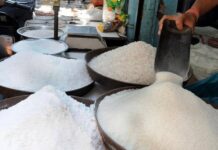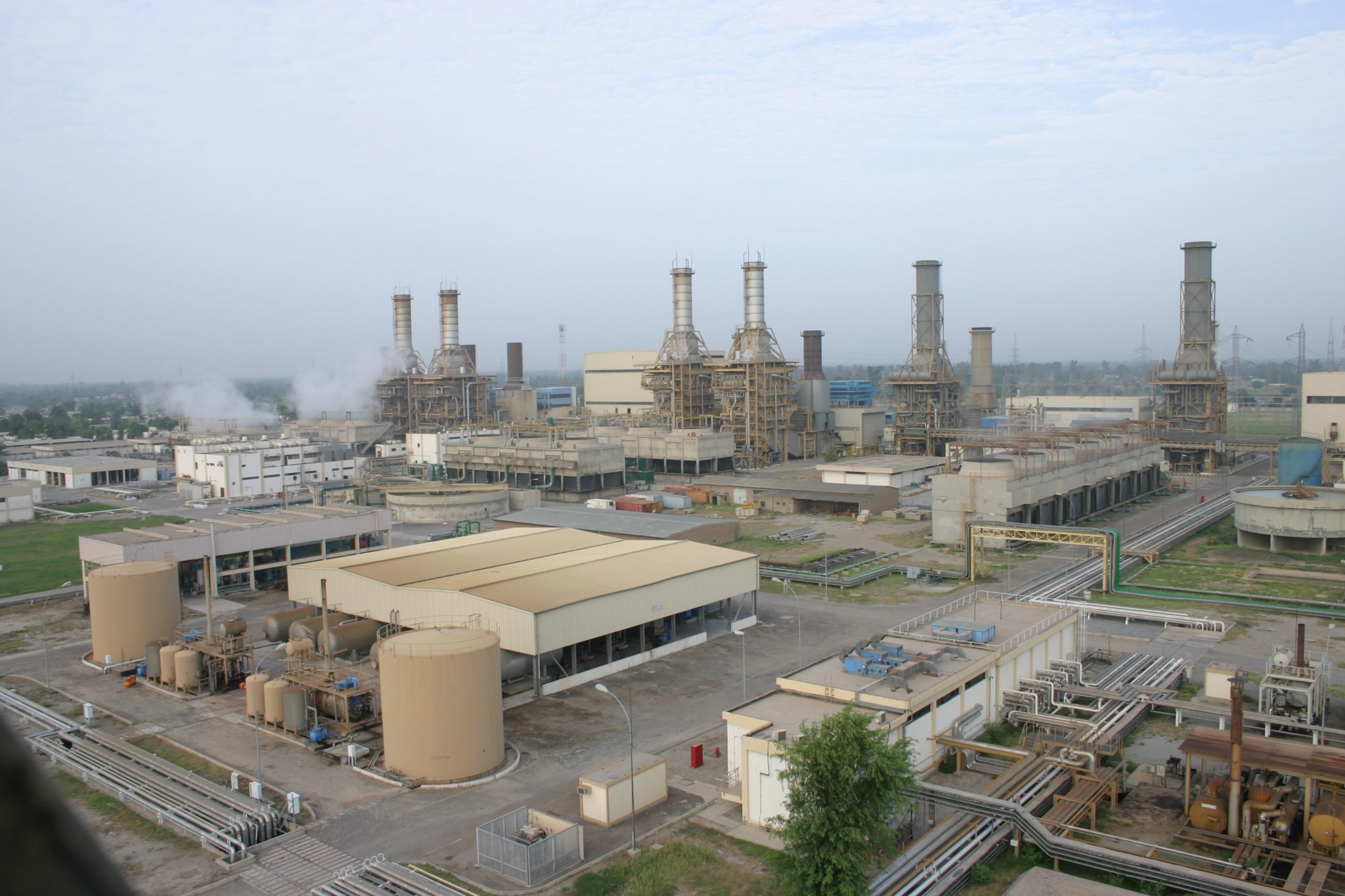The market hates independent power producers (IPPs) right now, and one that has been running for 35 years is probably at the bottom of the totem pole as far as investor interest is concerned. Add in a power purchase agreement (PPA) that is expiring next year, and investors absolutely could not be bothered with the company in question.
Yes, it certainly does look like its best days are behind the Kot Addu Power Company, one of Pakistan’s largest power producers. And it is not as though it has not been a good run for KAPCO. Maybe it is time to call it quits on this company? Not quite yet, according to some analysts, who argue that the company is better positioned than most to run for at least another five years, and possibly another decade.
The power plant at Kot Addu was constructed by the Water and Development Authority (WAPDA) in five phases between 1985 and 1996 in Muzaffargarh district in southern Punjab. In 1996, the same year that it was incorporated, the company was partially privatised, with 36% of its shares divested to strategic investors. Then, in 2005, the company was listed on the Karachi Stock Exchange.
The company has plodded along, operating and maintaining the 1,600-megawatt (MW) multi-fuel fired power plant (gas, furnace oil and diesel) at Kot Addu. It is the country’s largest combined cycle power plant, which means that it reuses the heat from the steam generated in its first thermal engines to continue producing energy. Combined cycle power plants are more efficient than most other types of thermal power plants.
“The plant combined cycle technology enables it to use the waste heat from the gas turbine exhaust to produce steam in the heat recovery steam generator, which in turn is used to run the steam turbines thereby resulting in fuel cost efficiency and minimum wastage,” the company explains on its website.
The plant comprises 10 gas turbines and five steam turbines, all neatly organized in three energy blocks with each block having a combination of gas and steam turbines.
All of that capacity, however, has been sitting idle over the last few months. During the first quarter of 2020 (the third quarter of the company’s fiscal year, which ends June 30), KAPCO’s plant generated 346 gigawatt-hours (GWh) of electricity, which accounts for only about 11.8% of the plant’s total capacity.
Meanwhile, receivables stand at Rs125.4 billion at the end of the first quarter of 2020, the latest period for which financial data is available. And even the government’s recent attempts to clear the energy sector’s inter-corporate circular debt – which piles up every year due to rampant electricity theft in the country – have only made a minor dent in the company’s liquidity problem. The government’s Energy Sukuk-II, an Islamic bond which was meant to pay down the circular debt, only resulted in Rs11.7 billion in cash inflows for KAPCO.
Add in the fact that KAPCO, like every other power generation company in Pakistan, is legally allowed only to sell to WAPDA, and that the agreement that governs that relationship – the PPA – is expiring on June 26, 2021, and the situation looks quite bleak for the company’s future.
Except KAPCO is not quite ready to go yet. KAPCO still has five to ten years of operational life left, according to Nabeel Dochki, a research analyst at Taurus Securities, a brokerage firm, in a note issued to clients on July 7. He notes, however, that there just may not be an appetite left for independent power producers (IPPs) among investors anymore.
Let us explain. When a power plant is constructed, it signs a PPA with the government of Pakistan. This document decides the terms and condition of the tariffs, of any government support, about how much electricity the government will buy etc.
This PPA is now ending, which is unfortunate because KAPCO can continue to be utilised for between five to ten years to generate power for Pakistan on a “Take and Pay” basis. This will be especially handy during the summer months when demand peaks.
So, what is in KAPCO’s favour? Well, liquefied natural gas (LNG) imports have rapidly increased in the last few years since they were allowed in Pakistan. And the fact that KAPCO’s plant can run on multiple fuels means that KAPCO can utilise that cheaper LNG rather than relying on the still relatively expensive furnace oil. Indeed, the proportion of electricity generated by KAPCO using LNG as the fuel has jumped from just 9% in 2015 to 77% in 2019.
This is good news, because LNG prices have dropped internationally, touching a low of $2.7 per million British thermal units (mmbtu) in February this year. The government also issued three provincial licenses for LNG regasification terminals. All in all, the government’s dependency on LNG is set to increase in the future.
“We believe this will increase the chances of utilisation of KAPCO’s plant beyond June 2021,” says Dochki.
In other words, if KAPCO can revise its PPA to include a greater utilisation of LNG as its main fuel, there is a strong chance that the government will renew a modified PPA with the company.
This expected PPA revision is particularly important because otherwise, it is not really a great environment to be an independent power producer. As Dochki notes, headwinds for IPPs have choked off investor sentiment, interest and any price upsurge for the last 18 months. There have also been lower electricity sales due to a new energy pricing mechanism that prioritises the cheapest fuels, which most IPPs do not use. And of course, there are always the rising receivables.
But perhaps the worst turn of events happened in March of this year, when a bombshell report published on IPPs was made public. That report claims that IPPs have been able to game the regulations to extract significantly higher profit margins than they are legally entitled to. That allegation, in turn, has led to IPPs now falling under extreme scrutiny. “The long term prospects of the company now depend on the revision of its PPA. Under these conditions, the PPA revision for KAPCO is consequential,” says Dochki.
For investors, the biggest fear is whether dividend payouts will fall. KAPCO paid out a dividend per share of Rs1.5 in the third quarter of fiscal year 2020, with Dochki expecting a dividend pay out of Rs2 in the fourth quarter. This would actually lead to the highest dividend yield in the market, at 19%.





















I am an investor of KAPCO, It seems that KAPCO has seen its worst the share prices have gone down from 97 in 2016 to 15 in march 2020. the way I see it, there is only one way and its up. if the PPA is renewed then we should see the prices go above Rs 50. its currently trading around 20 which is a good price if you can hold for a year or so.
KAPCO volumes are oversold so that this is low 21.
Else KAPCO share position is 32…..
If you want KAPCO goes 30 or above in 2 months .
Please note some points…
1-Don’t sell volume of KAPCO.
2-Buy or invest more volume.
3-Don’t go profit taking in KAPCO.
Sir can you give reasons to support your points? Will b thankfull.
check brother
Salam , since the need of energy is ever increasing we can expect the government to renew the contract .
WalaikomAsSalam Janab I support your stand.
Wait is a best option for us…..
Sitting govt of #pti run by #pmik must take notice of expiry period coming ahead of one of the biggest Ipps namely Kapco, n wapda including power ministry is not taking any action, When the coy has already applied for its licence renewal for mkrd than a year.
Such a big power plant must not go to waste for the sake of political publicity or anything else. When Kapco plant has long term useful life of. More than 03-05 years, govt should renew its licence with condition of restructuring their fueling system historically based on furnace or diesel n convert it fully to RLNG or COAL, whichever suits them best as per need of the country.
Power Plant did not made revaluation of property plant and equipment.
Revaluation can improve 40 billion in its balance sheet. which can increase the potential of acquisition of any privatization process under the umbrella of Govt.
secondly such a huge amount in circular debt will make earnings of Rs.10 per share in case of closure of plant. which is a good sign of strong footings of KAPCO.
without PPA revision its price can touch Rs.50.
And in case of PPA revision its price can go up to Rs.80
Dividend either is Rs.2,3 or Rs.4.5. it does not matter. only the good sign is Annual EPS can be Rs.26+ and rest of the amount will increase future earning in circular debt.
What is the conclusion?. We should keep kapco shares for maybe beyond 2021or sell them at Rs 24.
Please give expert opinion.
KAPCO Future?
Would b positive, as energy needs to grow sharply in future. Kapco is one of the biggest Co in Pakistan can’t b wasted
May I invest on kapco
It’s your choice after reading above mentioned article and following comments, it’s my opinion some analysts have under estimated the future of the company. Adding more wapda is biggest stakeholder having still around 40% shareholding, so three directors including chairman are from wapda. In my point of view there are more chances that the company would not only renew the agreement but also with some profitable conditions…..
The KAPCO plant maybe use fuel of LNG but i am not supporting to use Coal as one of the comments.
Several comments that it maybe used for another 5 to 10 maybe analyzed by the experts, however these plants are like homes and can be renovated leaving the main pillars on its original position and will work as good as 80% against new plants.
Power Plants Steam generation designed to work on 50% to 78% capacity. Some one saying that I have designed the plant to generate Steam capacity of 85 to 90% but that was theoretical, practically it is not possible, I have an experience of 25 years in boiler design and construction.
Don’t go to waste the plant, I know that there maybe some parties who purchase the plant when declared scrap in Pennie and either reutilize its parts, renovte the plant and errect it somewhere else to sell the generation of electricity to us on new rates or maybe export the plant.
Comments are closed.